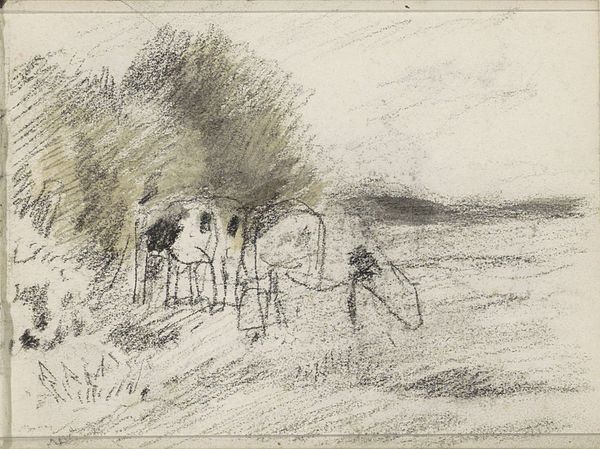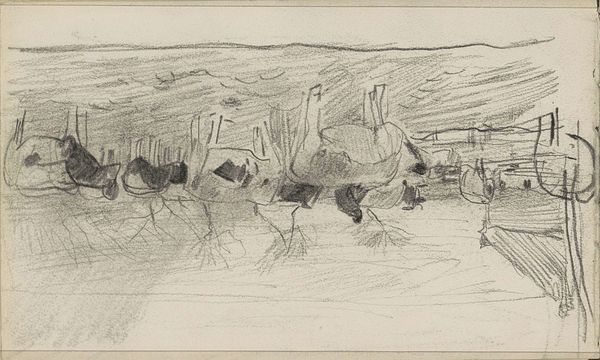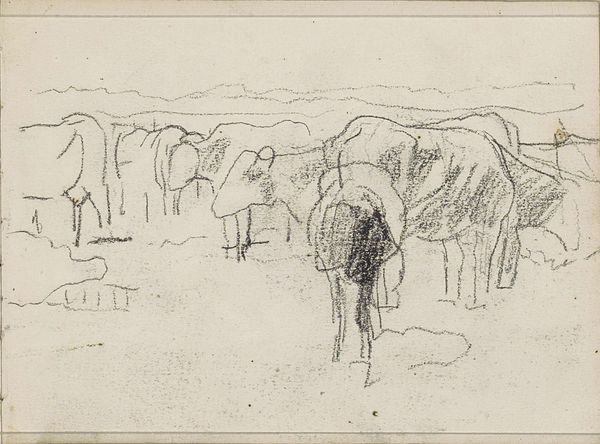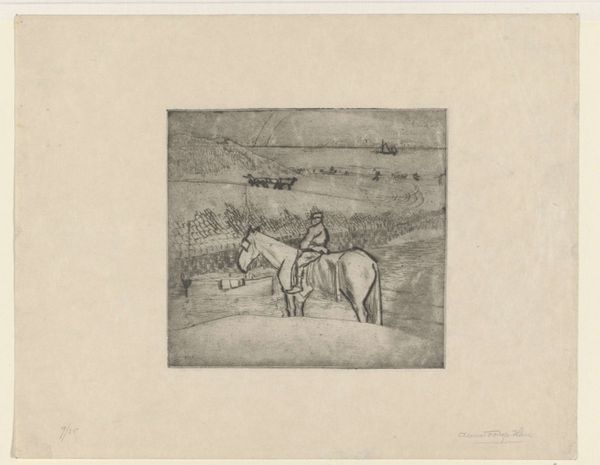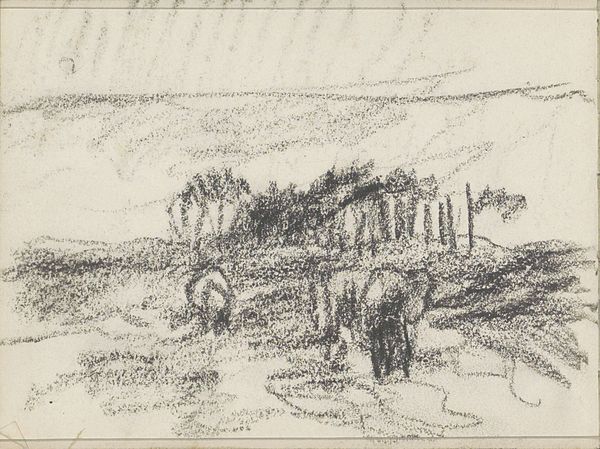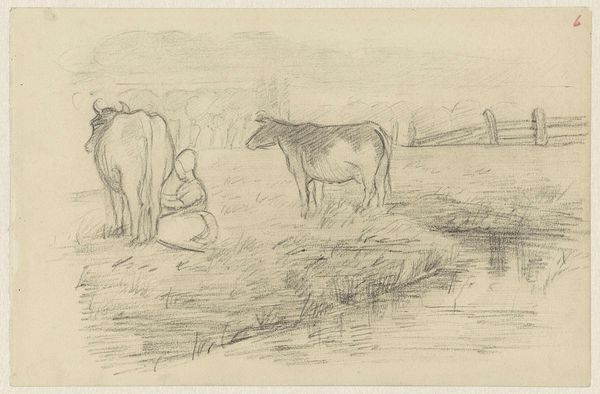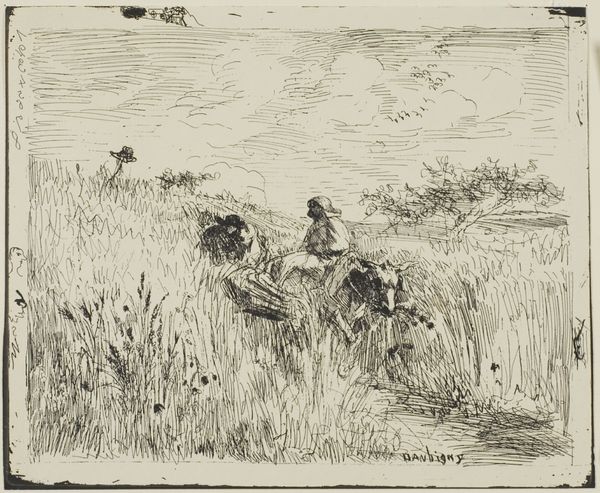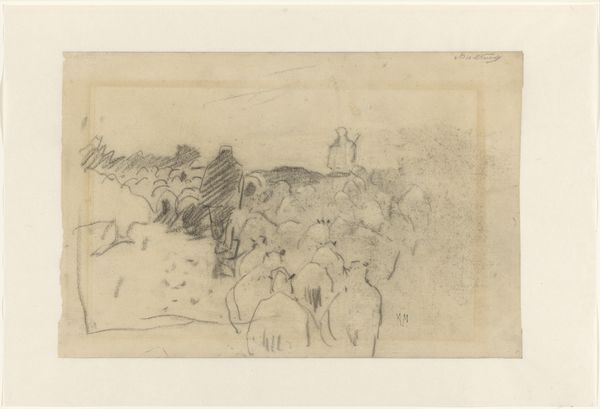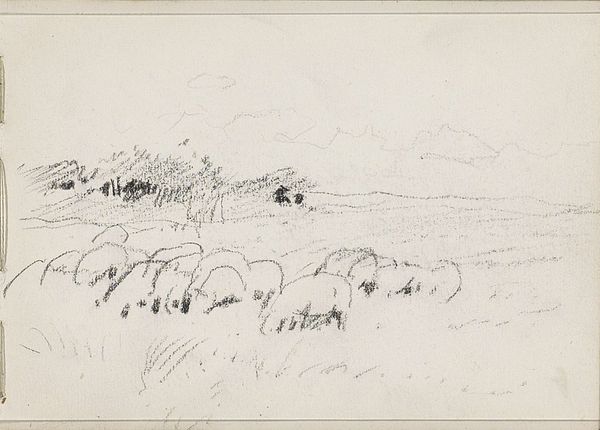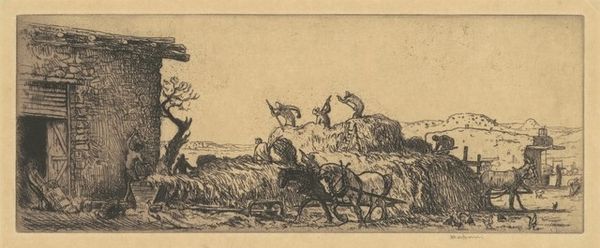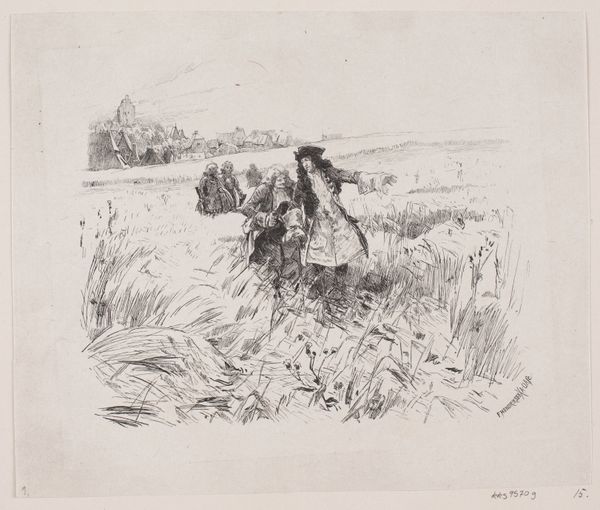
print, etching
#
ink drawing
# print
#
etching
#
landscape
#
figuration
Dimensions: Image: 99 x 150 mm Sheet: 337 x 457 mm
Copyright: National Gallery of Art: CC0 1.0
Editor: Here we have Mahonri Young’s "Navajo Woman and Pony," created in 1919 using etching. The scene is serene and evokes a sense of solitude. The woman seems completely self-sufficient. What symbolic weight might you find in this composition? Curator: What strikes me first is the connection between the figure and the landscape. Notice how the etched lines mimic the textures of the earth, binding the woman to the land. Do you see any visual echoes of the horse in the distant hills? Editor: I see what you mean. The rolling lines in the background suggest the contours of the horse’s back, almost like they are one. Curator: Precisely! The horse and landscape have long carried potent cultural associations – freedom, power, connection to nature. The horse isn't just a mode of transportation but an emblem. And then the figure of the woman, the fire, speaks to hearth and home, literally providing warmth. What feelings are conjured when these symbols converge? Editor: A feeling of belonging? But also perhaps a challenge, reflecting on the history of indigenous people and their relationship to the land. Curator: Indeed. It also brings forth enduring visual symbols, connecting us through shared human experience and collective memory. The fire itself represents life, transformation. Even in its simple rendering, it sparks a chain of interconnected symbols that link directly to both our past and present. Do you think Young's artistic choices amplify or perhaps complicate this historical relationship? Editor: I think it opens up a space for contemplation on a life of simplicity and harmony, and perhaps reminds us what has been lost and what could be preserved. Curator: Precisely. It seems Young invites us to acknowledge a multi-layered connection between subject, land, and symbol, enriching our own understanding of history and culture.
Comments
No comments
Be the first to comment and join the conversation on the ultimate creative platform.
